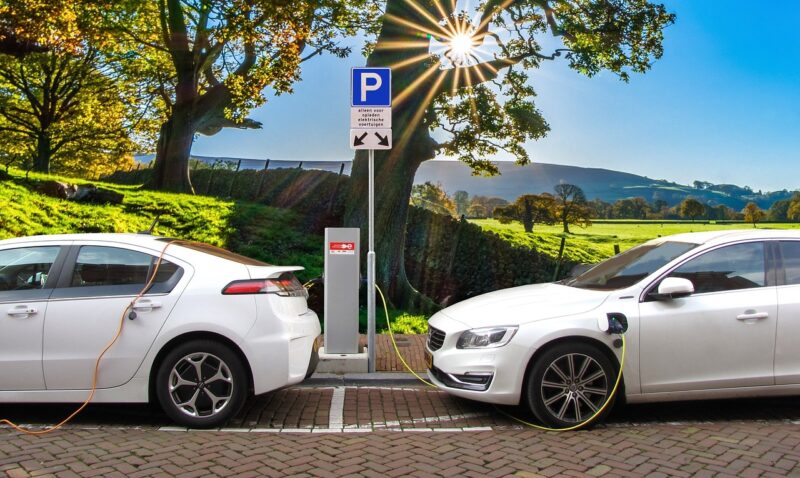The Comprehensive Guide to Choosing an Electric Vehicle: Range, Charging, and Budget
November 14, 2024

As the world shifts towards sustainable energy solutions, electric vehicles (EVs) have emerged as a popular choice for eco-conscious consumers and those looking to reduce their dependence on fossil fuels. However, choosing the right electric vehicle can be a daunting task with the plethora of options available today. From understanding range and charging capabilities to evaluating your budget, this guide will walk you through the critical factors you need to consider when selecting your ideal EV.
1. Understanding Electric Vehicle Types
Before diving into the specifics of range and charging, it’s essential to understand the different types of electric vehicles available on the market. EVs can be broadly categorized into three types:
- Battery Electric Vehicles (BEVs): These vehicles run entirely on electricity stored in batteries and do not have an internal combustion engine (ICE). Popular examples include the Tesla Model 3 and the Nissan Leaf.
- Plug-in Hybrid Electric Vehicles (PHEVs): PHEVs have both an electric motor and an internal combustion engine. They can run on electricity for a limited range and switch to gasoline when needed, providing added flexibility. The Mitsubishi Outlander PHEV is a prominent example.
- Hybrid Electric Vehicles (HEVs): Hybrid vehicles rely on a combination of electric power and traditional gasoline engines but cannot be plugged in to charge. They typically excel in fuel efficiency rather than pure electric range. The Toyota Prius is a well-known hybrid model.
Understanding these categories helps narrow your focus depending on your driving needs and environmental preferences.
2. Determining Your Driving Range Needs
Range anxiety is a common concern for potential EV buyers. The range of an electric vehicle refers to how far it can travel on a single charge and can vary significantly between models. Here are a few steps to determine what range is suitable for you:
- Assess Your Daily Commute: Consider the distance you travel each day for work, errands, and other activities. The average American drives about 30 miles per day, which means many current EVs can accommodate a typical commute comfortably.
- Plan for Longer Trips: If you frequently undertake longer journeys, opt for an EV with a higher range (250 miles or more) to minimize concerns about charging during trips. Also, consider the availability of quick charging stations along your routes.
- Evaluate Regional Factors: If you live in an area with extreme temperatures, your EV’s range may be affected by climate conditions. Cold weather tends to reduce battery performance, which is worth considering when evaluating range.
Taking the time to understand your driving habits will help you choose an EV that meets your range requirements and eases any concerns about running out of power.
3. Charging Infrastructure and Options
The charging capabilities of an electric vehicle play a significant role in the overall convenience of owning one. Understanding the types of charging available is crucial:
- Home Charging: Most EV owners charge their vehicles at home using Level 1 (standard household outlets) or Level 2 (240-volt) chargers. A Level 2 charger will significantly reduce charging times, making it a worthwhile investment for frequent users.
- Public Charging Stations: Consider the availability of public charging stations in your area, including Level 2 chargers and fast-charging options (DC Fast Charging). Mobile apps like PlugShare can help you locate charging stations near you, providing peace of mind while on the road.
- Charging Speed: The charging speed of your EV will depend on the type of charger used. Level 1 chargers are the slowest, while Level 2 chargers offer medium speed. Fast chargers can provide around 80% charge within 30 minutes, thus enhancing the convenience for long-distance travel.
Understanding your charging options and infrastructure accessibility will help you determine which EV fits seamlessly into your lifestyle.
4. Budget Considerations for Electric Vehicles
Investing in an electric vehicle entails more than the upfront purchase price. Here’s how to effectively manage your budget:
- Purchase Price: EVs can range from affordable models like the Chevrolet Bolt to luxury versions like the Tesla Model S. Conduct a thorough analysis of your budget while factoring in potential tax credits or rebates that can help reduce costs.{Generally, the Federal government offers a tax credit of up to $7,500 for qualifying EV purchases, varying based on make and model.}
- Operating Costs: Factor in potential savings in fuel and maintenance. EVs typically have lower running costs, as electricity is often cheaper than gasoline, and they generally require less maintenance than ICE vehicles due to fewer moving parts.
- Insurance and Financing: Get insurance quotes for your selected EV models; owning an EV can affect insurance premiums. Additionally, explore financing options to find competitive rates, as EV financing tends to vary significantly by lender.
A comprehensive understanding of your budget encompasses both immediate and long-term financial considerations, ensuring a wise investment in your electric vehicle of choice.
5. Test Driving and Researching Models
After assessing your needs for range, charging, and budget, spend time researching various electric vehicle models that meet your criteria. Consider the following:
- Test Drive: Schedule immersive test drives to experience how each vehicle feels on the road. Pay attention to handling, comfort, and desired features such as advanced safety tech and in-car connectivity.
- Read Reviews and Ratings: Consumer and expert reviews provide insights into the real-world performance of EVs. Websites like Consumer Reports and Edmunds offer comprehensive evaluations that can help you weigh the pros and cons of each model.
- Compare Features: Make a feature comparison chart. Consider the battery capacity, tech integrations, storage, and available trims/versions within each model to hone in on the best fit for your needs.
Taking the time to research and experience potential EVs will ensure you make an informed decision and select a car that fits your lifestyle.
Conclusion
Choosing an electric vehicle is an essential step towards a more sustainable future, but it requires careful consideration of your range, charging capabilities, and budget. By understanding the various vehicle types, determining your driving habits, researching charging infrastructure, navigating budget considerations, and conducting thorough research, you’ll be well-equipped to choose the right EV for your needs.
Make an informed decision not only for your personal convenience but also in pursuit of a greener, more sustainable world. As technology advances, electric vehicles are becoming more efficient, affordable, and accessible, paving the way for an electrifying future on the roads.





